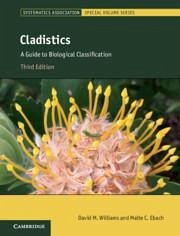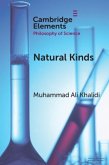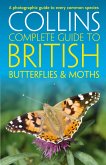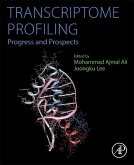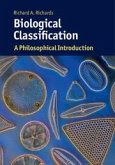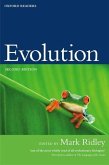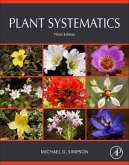David M. Williams (London Natural History Museum), Malte C. Ebach (Sydney University of New South Wales)
Cladistics
A Guide to Biological Classification
53,99 €
inkl. MwSt.
Versandkostenfrei*
Liefertermin unbestimmt
Melden Sie sich
hier
hier
für den Produktalarm an, um über die Verfügbarkeit des Produkts informiert zu werden.

27 °P sammeln
David M. Williams (London Natural History Museum), Malte C. Ebach (Sydney University of New South Wales)
Cladistics
A Guide to Biological Classification
- Broschiertes Buch
This new edition of a foundational text presents a current review of cladistics, as applied to biological classification. It covers cladistics in the era of molecular data, with practical examples and diagrams. An accessible guide for students and researchers in taxonomy, systematics, comparative biology, evolutionary biology and molecular biology.
Andere Kunden interessierten sich auch für
![Natural Kinds Natural Kinds]() Muhammad Ali Khalidi (City University of New York)Natural Kinds23,99 €
Muhammad Ali Khalidi (City University of New York)Natural Kinds23,99 €![British Butterflies and Moths British Butterflies and Moths]() Paul SterryBritish Butterflies and Moths23,99 €
Paul SterryBritish Butterflies and Moths23,99 €![Transcriptome Profiling Transcriptome Profiling]() Transcriptome Profiling144,99 €
Transcriptome Profiling144,99 €![Biological Classification Biological Classification]() Richard A. Richards (University of Alabama)Biological Classification48,99 €
Richard A. Richards (University of Alabama)Biological Classification48,99 €![Evolution Evolution]() Mark Ridley (, Lecturer at Somerville College, and member of the ZoEvolution72,99 €
Mark Ridley (, Lecturer at Somerville College, and member of the ZoEvolution72,99 €![Organismic Animal Biology Organismic Animal Biology]() Ariel D. Chipman (Professor Professor and Depa Departmental ChairOrganismic Animal Biology39,99 €
Ariel D. Chipman (Professor Professor and Depa Departmental ChairOrganismic Animal Biology39,99 €![Plant Systematics Plant Systematics]() Michael G. Simpson (professor of Biology at San Diego State UniversPlant Systematics92,99 €
Michael G. Simpson (professor of Biology at San Diego State UniversPlant Systematics92,99 €-
-
-
This new edition of a foundational text presents a current review of cladistics, as applied to biological classification. It covers cladistics in the era of molecular data, with practical examples and diagrams. An accessible guide for students and researchers in taxonomy, systematics, comparative biology, evolutionary biology and molecular biology.
Hinweis: Dieser Artikel kann nur an eine deutsche Lieferadresse ausgeliefert werden.
Hinweis: Dieser Artikel kann nur an eine deutsche Lieferadresse ausgeliefert werden.
Produktdetails
- Produktdetails
- Systematics Association Special Volume Series
- Verlag: Cambridge University Press
- 3 Revised edition
- Seitenzahl: 452
- Erscheinungstermin: 6. August 2020
- Englisch
- Abmessung: 246mm x 188mm x 26mm
- Gewicht: 982g
- ISBN-13: 9781107400412
- ISBN-10: 1107400414
- Artikelnr.: 58773789
- Herstellerkennzeichnung
- Libri GmbH
- Europaallee 1
- 36244 Bad Hersfeld
- gpsr@libri.de
- Systematics Association Special Volume Series
- Verlag: Cambridge University Press
- 3 Revised edition
- Seitenzahl: 452
- Erscheinungstermin: 6. August 2020
- Englisch
- Abmessung: 246mm x 188mm x 26mm
- Gewicht: 982g
- ISBN-13: 9781107400412
- ISBN-10: 1107400414
- Artikelnr.: 58773789
- Herstellerkennzeichnung
- Libri GmbH
- Europaallee 1
- 36244 Bad Hersfeld
- gpsr@libri.de
David M. Williams is a researcher at the Natural History Museum, London, specializing in diatom (Bacillariophyta) taxonomy and biogeography. He is the current president of the Systematics Association, London. He has written over 240 scientific papers and ten books.
Part I. The Interrelationships of Organisms: 1. What this book is about
2. Classification
Part II. Systematics: Exposing Myths: 3. Relationship diagrams
4. Essentialism and typology
5. Monothetic and polythetic taxa
6. Non-taxa or the absence of -phyly: paraphyly and aphyly
Part III. The Cladistic Programme: 7. Parameters of classification: ordo ab chao
Part IV. How to Study Classification: 8. Modern artificial methods and raw data
9. How to study classification: consensus techniques and general classifications
10. How to study classification - 'total evidence' vs 'consensus', character congruence vs taxonomic congruence, simultaneous analysis vs partitioned data
11. How to study classification: natural methods I - consensus revisited
12. How to study classification: natural methods II - beyond method, the philosophy of three-item analysis
Part V. Beyond Classification: 13. Beyond classification: how to study phylogeny
14. The separation of classification and phylogenetics
15. Further myths and misunderstandings.
2. Classification
Part II. Systematics: Exposing Myths: 3. Relationship diagrams
4. Essentialism and typology
5. Monothetic and polythetic taxa
6. Non-taxa or the absence of -phyly: paraphyly and aphyly
Part III. The Cladistic Programme: 7. Parameters of classification: ordo ab chao
Part IV. How to Study Classification: 8. Modern artificial methods and raw data
9. How to study classification: consensus techniques and general classifications
10. How to study classification - 'total evidence' vs 'consensus', character congruence vs taxonomic congruence, simultaneous analysis vs partitioned data
11. How to study classification: natural methods I - consensus revisited
12. How to study classification: natural methods II - beyond method, the philosophy of three-item analysis
Part V. Beyond Classification: 13. Beyond classification: how to study phylogeny
14. The separation of classification and phylogenetics
15. Further myths and misunderstandings.
Part I. The Interrelationships of Organisms: 1. What this book is about
2. Classification
Part II. Systematics: Exposing Myths: 3. Relationship diagrams
4. Essentialism and typology
5. Monothetic and polythetic taxa
6. Non-taxa or the absence of -phyly: paraphyly and aphyly
Part III. The Cladistic Programme: 7. Parameters of classification: ordo ab chao
Part IV. How to Study Classification: 8. Modern artificial methods and raw data
9. How to study classification: consensus techniques and general classifications
10. How to study classification - 'total evidence' vs 'consensus', character congruence vs taxonomic congruence, simultaneous analysis vs partitioned data
11. How to study classification: natural methods I - consensus revisited
12. How to study classification: natural methods II - beyond method, the philosophy of three-item analysis
Part V. Beyond Classification: 13. Beyond classification: how to study phylogeny
14. The separation of classification and phylogenetics
15. Further myths and misunderstandings.
2. Classification
Part II. Systematics: Exposing Myths: 3. Relationship diagrams
4. Essentialism and typology
5. Monothetic and polythetic taxa
6. Non-taxa or the absence of -phyly: paraphyly and aphyly
Part III. The Cladistic Programme: 7. Parameters of classification: ordo ab chao
Part IV. How to Study Classification: 8. Modern artificial methods and raw data
9. How to study classification: consensus techniques and general classifications
10. How to study classification - 'total evidence' vs 'consensus', character congruence vs taxonomic congruence, simultaneous analysis vs partitioned data
11. How to study classification: natural methods I - consensus revisited
12. How to study classification: natural methods II - beyond method, the philosophy of three-item analysis
Part V. Beyond Classification: 13. Beyond classification: how to study phylogeny
14. The separation of classification and phylogenetics
15. Further myths and misunderstandings.
